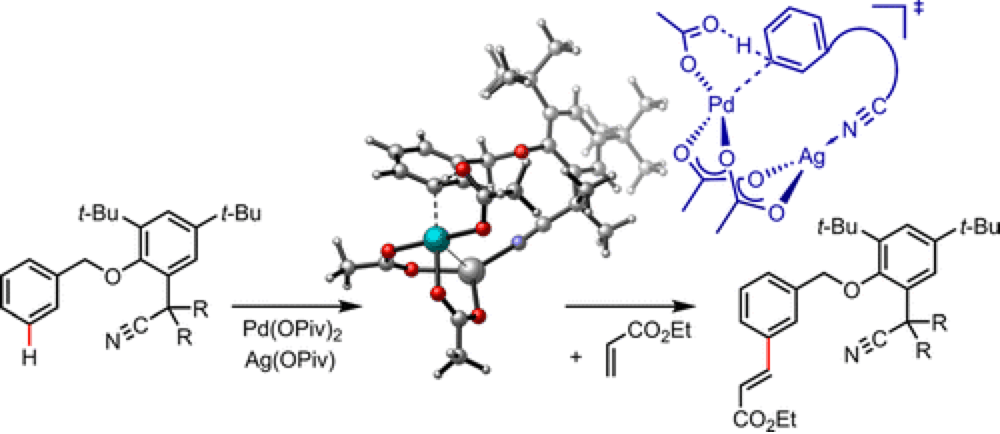Pd-Catalyzed M-Selective C–H Activation with a Nitrile-Containing Template: Computational Study on Mechanism and Origins of Selectivity
Yun-Fang Yang, Gui-Juan Cheng, Peng Liu, Dasheng Leow, Tian-Yu Sun, Ping Chen, Xinhao Zhang, Jin-Quan Yu, Yun-Dong Wu and K. N. Houk
J. Am. Chem. Soc.,
2014, 136, 344-355; 10.1021/ja410485g

12/2013
One of the challenges central to bringing C–H Functionalization into the mainstream of Synthetic organic chemistry is control over the selectivity of the reaction. With the ubiquity of C–H bonds found in the typical organic molecule developing a reaction that can effective select for reaction at a single location is complicated.
One strategy that has found significant recent success is to use a directing group, which guides the reactive species to a specific site. This approach has been found to be very effective in the functionalization of C–H bonds adjacent or close to the directing group, but this report from the Yu and Houk groups reveals an understanding of the chemistry required to take this approach to the next level.
The Yu group have developed extended templates, directing groups designed to deliver the reactive species to select positions on molecules. Using this approach they have demonstrated the ability to functionalize previous inaccessible or uncontrollable positions on a molecule. The Houk group has modeled these templates, using Density Functional Theory, deriving the properties that govern the unprecedented site-selectivity. This not only provides an understanding of this reaction, but also a foundation upon which to design new templates to extend this technology and build templates that can increase the control and scope of C–H Functionalization